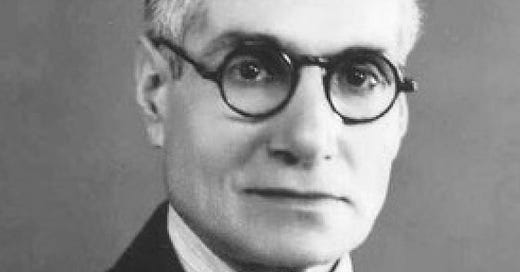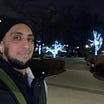Culture, politics, technology, and religion have intermingled in complex and often surprising ways in the history of the Middle East. Our forthcoming book, Revolutionary Engineers: Learning, Politics, and Activism at Aryamehr University, tells the story of what is now known as Sharif University, also referred to as the "MIT of the Middle East." We tell the dramatic and contested circumstances of its founding by the US-backed Shah of Iran, who viewed the new university as a signature initiative in his broader ambitions to modernize the nation.
Our book also describes the role of US institutions, including MIT, in the early formation of the university, as well as the opposition of leftist MIT students and faculty to collaborating with the authoritarian Shah. Central to the entire narrative is the student and faculty activism that thrived within the university despite the violent suppression and even killing of student activists by SAVAK, the Shah’s secret police.
Drawing on a robust set of archival records and oral histories, our book offers a new and, we believe, significant understanding of the momentous 1979 revolution. This is the first comprehensive examination of the relationship between Sharif University and the 1979 revolution, which altered the course of history and continues to shape the geopolitical order of the Middle East. In our book, we don't just recount historical events; we also delve into the complexities and contradictions that surround them. For example, there is a deep irony at the heart of the story we tell: students and professors at the Shah's new university, Aryamehr (literally meaning "Shah's University"), were at the forefront of the bloody revolution that ultimately led to the dethroning of the Shah himself. There are many lessons and implications, not least of which is what Sharif's early history and its relation to the 1979 revolution can teach us in this current troubled moment in higher education about the consequences of suffocating free speech on university campuses. In fact, the suppression of the speech of activists, writers, artists, and students was one of the fundamental grievances that powered the 1979 revolution.
If you're intrigued, please consider pre-ordering the book or attending one of our forthcoming talks. Alternatively, if you would like to request a book talk in your area, we are currently planning an academic and community book tour. We would love to visit your university, library, bookstore, or community space. We are happy to give talks in either Persian or English. We conducted a soft virtual book launch on April 9th, co-hosted by the Center for Iranian Diaspora Studies at San Francisco State University and the Center for Middle Eastern Studies at the University of California, Berkeley. We have two forthcoming talks: one on May 22, co-hosted by my home department, the Learning Sciences at Northwestern University, and the Middle East and North Africa Studies program, where I am also a faculty affiliate. Our third talk will take place in person on May 29 at Stanford University, hosted by the Iranian Studies program.
That one in particular feels high stakes for me, not just because my mom is flying from Chicago to attend in person, or my uncles from Sacramento will be driving down for the evening talk, or my step daughter Simone who is a student at Stanford will likely be in attendance as well, but also because of the prestige and reputation attached with Stanford's Iranian studies program. It's one of those rare academic programs that has managed to be simultaneously respected for its rigorous intellectual culture and its close ties to the strong Iranian diaspora community in the San Francisco Bay Area. Anyone who knows Iranians knows we are a highly opinionated bunch. As I prepare for Stanford, I am fully anticipating many opinions, including some critical ones regarding some of our book's main theses.
Here's a quick glimpse into one of them. First, a bit of context. One of the academic conversations our book contributes to is the ongoing discussion about the role of culture and diversity in STEM and STEM education. Much of my prior academic writing has been rooted in sociocultural and critical perspectives on science and technology, learning sciences, and STEM education. Across this literature, a common critique emerges regarding how dominant Western values within science and technology have marginalized non-Western cultures and perspectives.
In a similar vein, Iran has a long history of resisting foreign powers, as well as an intellectual tradition that has resisted Western influences. Figures like Jalal Al-Ahmad and Ahmad Kasravi are just two examples that we discuss in the book.
Kasravi (above) was my grandfather's favorite writer and intellectual. His books are currently residing in my father's house in Minnesota. Kasravi is notable for his beginnings as a religious figure, but his eventual evolution to a strong critic of Islamic influences in Iranian thinking. For him, an embrace of rationality, logic, and science was the necessary antidote to the mysticism and sentimentality represented by religious thought and even the arts more generally (he was even skeptical about the place of poetry in Iranian culture and politics). Notably, Kasravi was also critical of Western science, criticizing the immorality of science being used for war and imperialism.
And then, of course, there is Dr. Seyyed Hossein Nasr, the 3rd chancellor of Aryamehr University. By any assessment, Dr. Nasr is a very complex figure. He is Western-educated at MIT and Harvard, yet throughout his decades of highly prolific scholarly output, he has consistently assailed what he views as the corrupting influence of Western values on science and technology. He is deemed one of the preeminent living Islamic philosophers. In fact, while he was Chancellor, he attempted to Iranianize and Islamicize the Shah's university! In our book, we dedicate a chapter to exploring his philosophical positions and the specific actions and their outcomes during his leadership. Here I am in his office at George Washington University in Washington, D.C., where he is currently a University Professor in the Department of Religion.
Given these intellectual precedents and the revolutionary political culture at Aryamehr, which was defined in opposition to the US-backed Shah's regime, as a researcher, I anticipated learning that the views of activist students on engineering would reflect a critical position similar to that of Nasr and other Iranian intellectuals. They didn’t.
In the oral histories we conducted, students and faculty alumni of the university, by and large, expressed admiration and respect for the authority of Western science, rejecting cultural or Islamic approaches to STEM as regressive. Many of our interviewees held fundamental epistemological positions on science and technology that align most closely with what contemporary scholars would describe as hierarchical and normative views of disciplinary domains. In fact, many of our interviewees reasoned that the inherent rationalism and objectivity of STEM disciplines are precisely what qualify them to analyze and provide commentary on social and political problems.
In one of our interviews, a former Aryamehr professor explained to us this way: “A mechanical or electrical engineer could nicely design their machines and earn good money. This makes them believe that politics works like science. That you can design and expect it to work!”
These are unexpected and complex analyses that challenged my own views, and to be honest, went against what I wanted to find in the research. In our book and in our upcoming presentations, we grapple with these contradictions and complexities. Sharif University remains one of the most significant engineering universities in the Middle East, and has consistently supplied US universities with Iran's most talented students.
There are likely dozens of Sharif alumni amongst the faculty and students at Stanford. I wonder what the current administration's immigration policies will mean for the future of Sharif students at elite American universities? I wonder how Sharif students today are dealing with the political situation in Iran? I wonder how the Trump administration and its sycophants might learn from understanding the outcomes and consequences of the full-bodied assaults on academic freedom and free speech at Aryamehr University? Some will point out that the Shah’s autocratic tendencies pale in comparison to the ruthlessness of the current Islamic regime. This is unconditionally true. It is also true, however, that the Shah and university leaders fundamentally undervalued the sacred right to speech and the value of student and faculty dissent. Who knows what would have happened in Iran if the conditions for academic freedom and free speech had been respected and cherished? One can imagine. Ultimately, the history of Sharif University demonstrates the power of students and professors to shape history, for better or worse. As the future of higher education and democracy literally hangs in the balance in the US, it is up to us to determine which lessons to learn and apply to the current crisis unfolding on university campuses in the United States.





